Kodak 35mm film serves up a sinister slice of L.A.-noir for TNT’s 'I Am the Night'
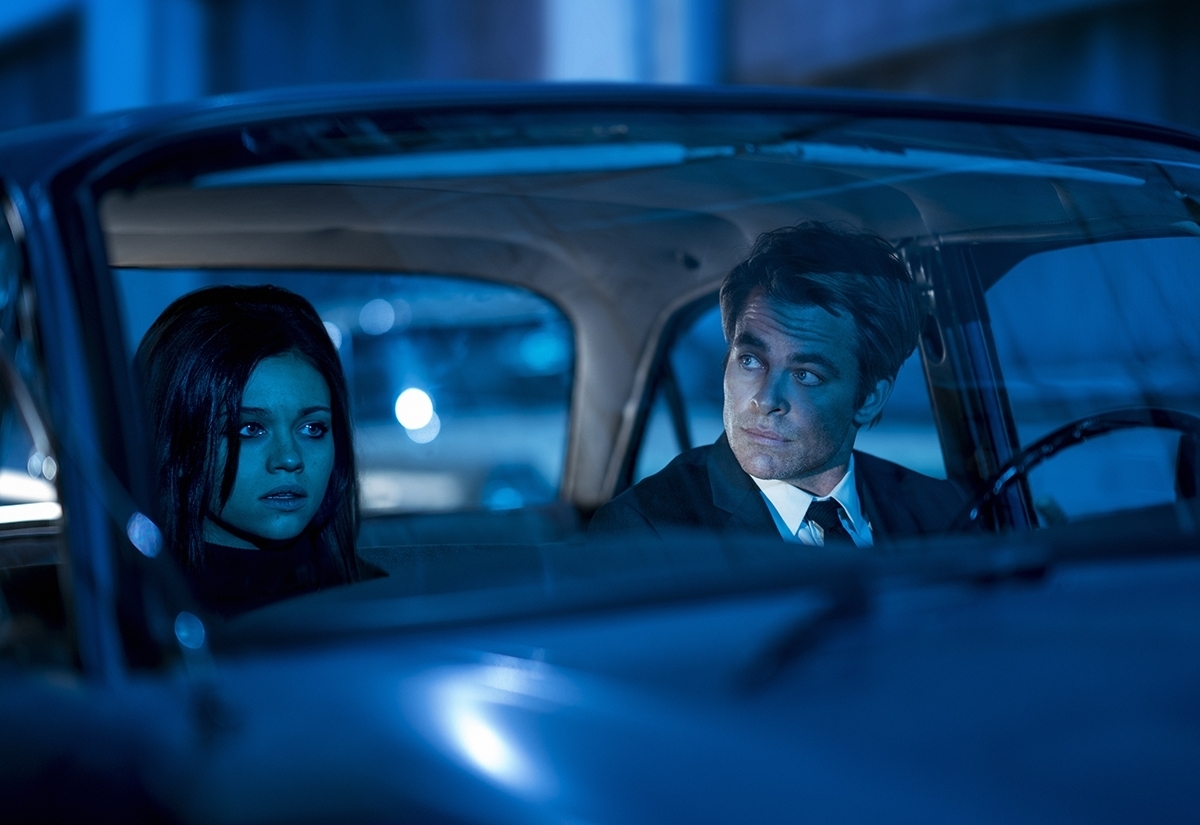
India Eisley stars as Fauna Hodel, with Chris Pine as Jay Singletary in I Am the Night. Image by Clay Enos. © Turner Entertainment Networks, Inc. A Time Warner Company. All rights reserved.
Captured on Kodak 35mm film, TNT’s limited television series, I Am the Night, takes a forbidding trip into one of Hollywood’s most nefarious chapters.
Based around true events during the late 1960s, the six-part series tells the gripping story of Fauna Hodel (India Eisley), a teenage girl who was given away at birth, but who later uncovers dark secrets from her past.
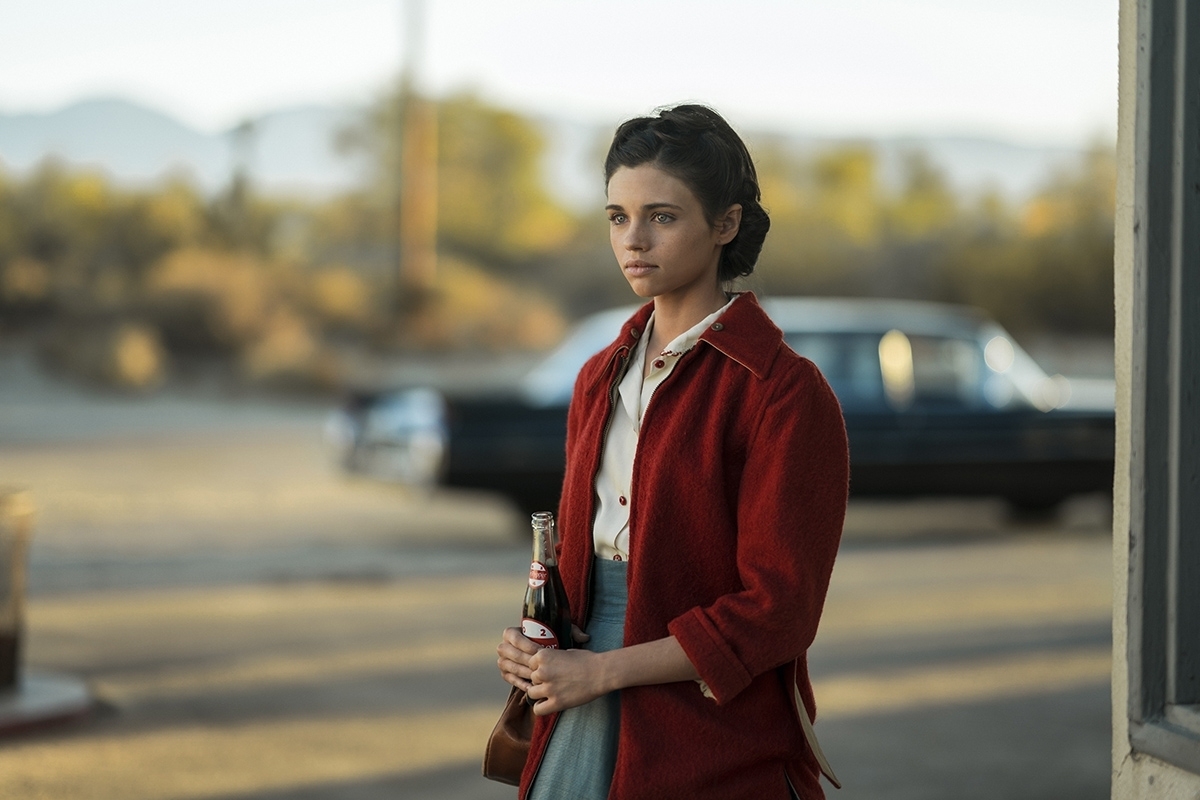
India Eisley stars as Fauna Hodel in I Am the Night. Image by Clay Enos. © Turner Entertainment Networks, Inc. A Time Warner Company. All rights reserved.
Fauna grows up more or less comfortably in Sparks, on the sandy outskirts of Reno, Nevada, until one day she makes a discovery that leads her to question everything. As she begins to examine the mysteries of her origins, she encounters Jay Singletary (Chris Pine), a disgraced investigative reporter, haunted by the case that ruined him. Together they follow a sinister trail that swirls ever closer to a notorious physician, gynecologist Dr. George Hodel (Jefferson Mays), a man involved in some of Hollywood's darkest debauchery, and likely, its most abominable unsolved crime.
I Am the Night, written by Sam Sheridan, was inspired by Fauna Hodel’s autobiography, One Day She'll Darken. The first two episodes, which established the show’s overall noir-esque look and feel, were directed by Patty Jenkins, with cinematographer Matthew Jensen ASC. Episodes three and four were directed by Victoria Mahoney, working with DP Trevor Forrest, with the concluding pair of shows helmed by Carl Franklin collaborating with DP Michael McDonough BSC ASC.
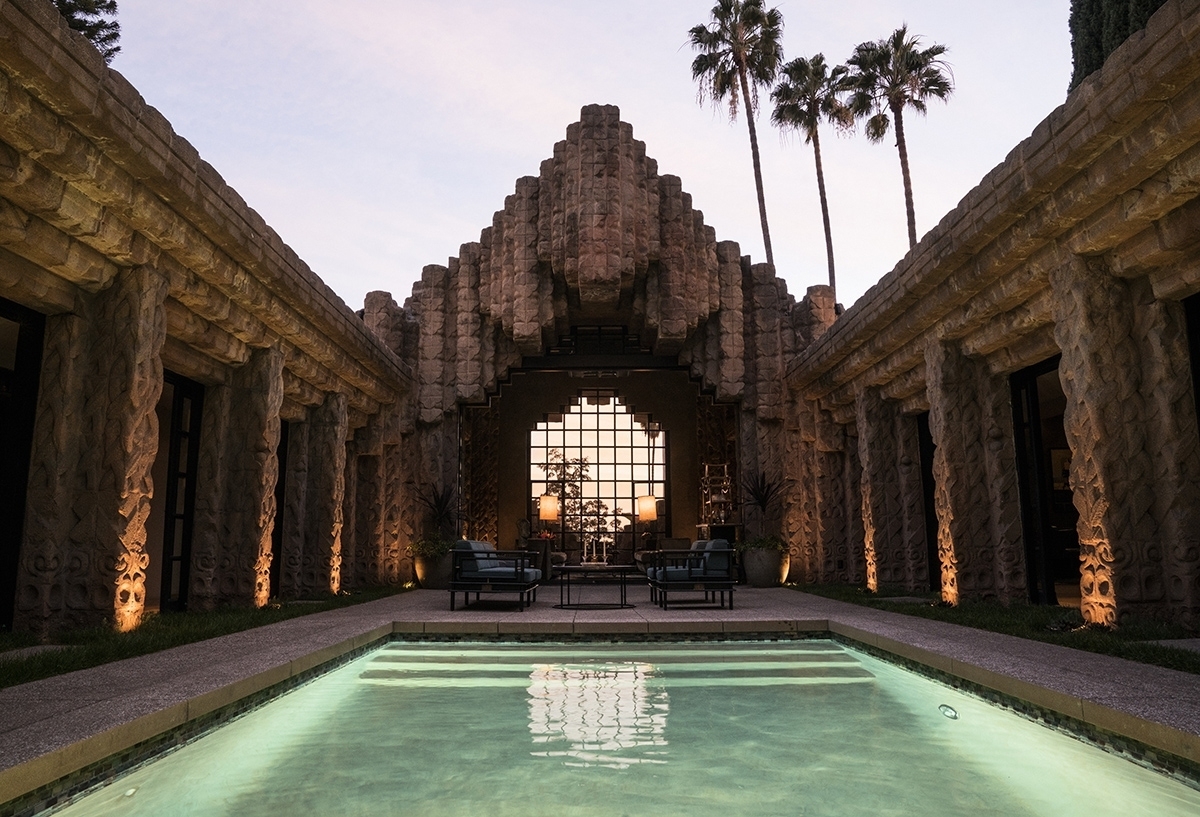
The John Sowden House from I Am the Night. Image by Clay Enos. © Turner Entertainment Networks, Inc. A Time Warner Company. All rights reserved.
The series filmed between October 2017 and March 2018 starting at Dust Bowl locations in Lancaster and San Dimas, California, which doubled for Sparks, before moving to multiple venues across the wider Los Angeles conurbation. These included the imposing John Sowden House, a residence built in 1926 in the Los Feliz area by architect Frank Lloyd Wright, noted for its use of ornamented textile blocks, striking facade and resemblance to a Mayan temple. The house was previously owned by the infamous Dr. Hodel. For the show’s denouement, filming also took place on the Hawaiian island of Oahu.
“Patty and I have been working pretty solidly together for three years now,” says Jensen, who also shot Wonder Woman (2017) and the upcoming Wonder Woman 1984 for Jenkins on 35mm Kodak film. “She is a great supporter and a true lover of celluloid. Harnessing assistance from Kodak, Panavision and the lab team at Fotokem, she played a major role in persuading the studio that she was better able to deliver something with gravitas on 35mm film than on digital.
“As this was a period show, we knew that film – in combination with the lenses, lighting, carefully dressed locations and the amazing costume design – would provide an automatic platform to the past, an instant nostalgia.”
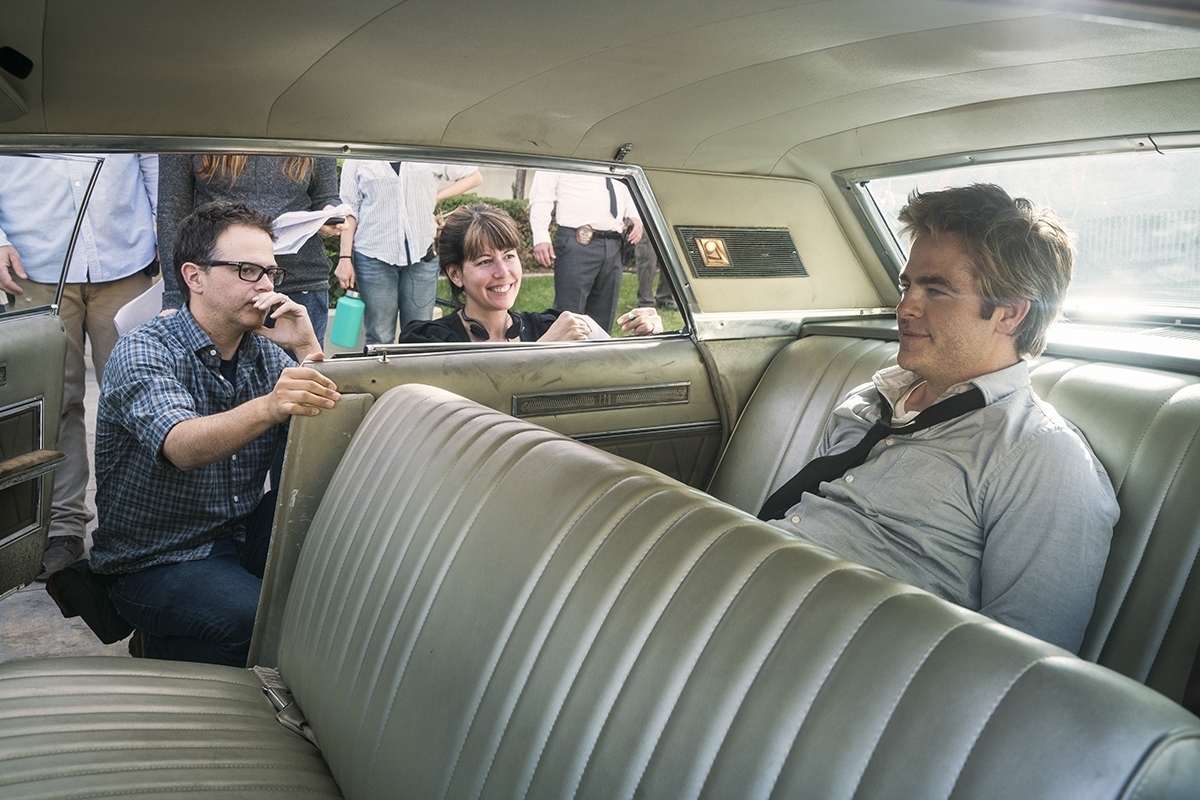
Actor Chris Pine (Jay Singletary) with director Patty Jenkins and cinematographer Matthew Jensen ASC, during production on I Am the Night. Image by Clay Enos. © Turner Entertainment Networks, Inc. A Time Warner Company. All rights reserved.
Regarding the look-and-feel for the show, Jensen says, “It was a little hilarious when Patty and I brought out the exact same reference materials when we first met about the project. We knew we were in sync right from the start.”
Pictorial inspirations that helped provide an entry point to the late '60s period, included color stills work by photographers such as William Eggleston, Gordon Parks and Stephen Shore, which Jenkins and Jensen appreciated variously for their striking naturalism and vivid quality of colors. The pair also considered Alfred Hitchcock’s Vertigo (1958, DP Robert Burks) for the way the director created tension and portrayed cunning power shifts between characters through camera positioning, framing and blocking.
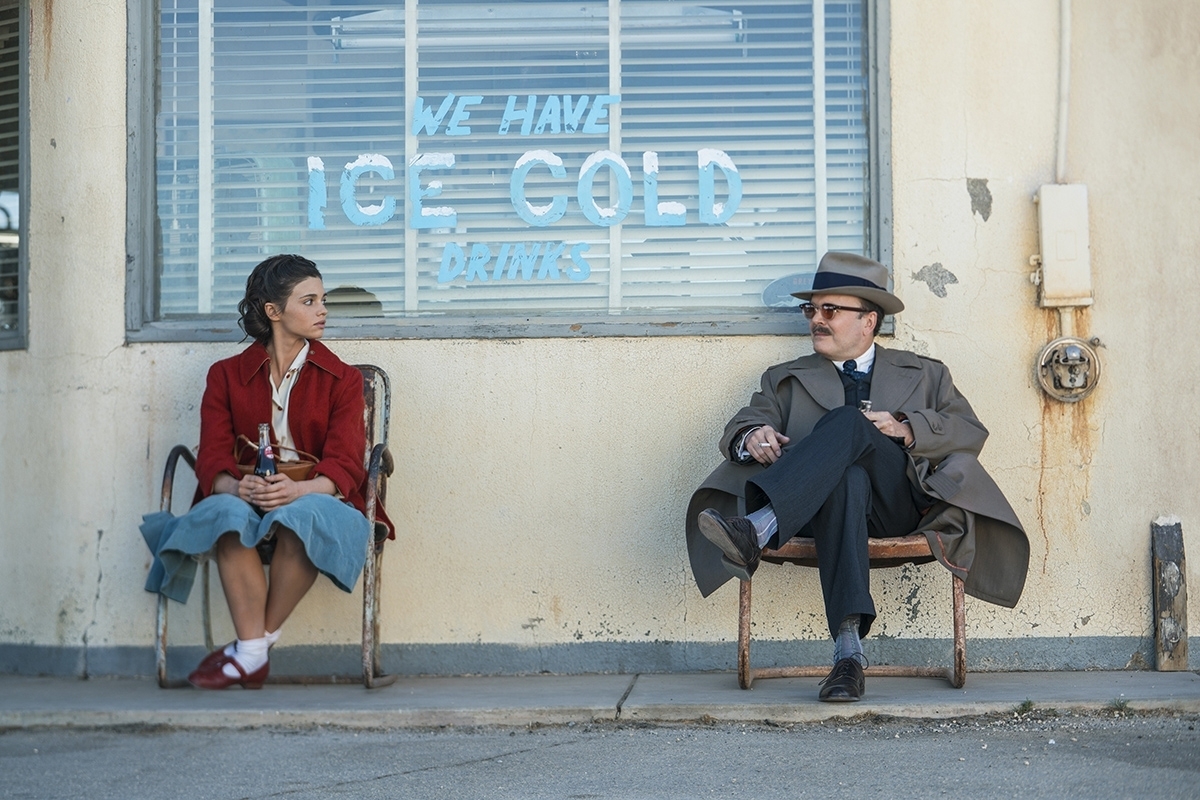
An early scene from I Am the Night. Image by Clay Enos. © Turner Entertainment Networks, Inc. A Time Warner Company. All rights reserved.
In shooting both the pilot and the second episode, Jensen developed a through-line of lenses, film stocks, exposure and processing techniques for Forrest and McDonough to follow for their work on subsequent episodes.
Starting with the lenses, Jensen selected Panavision PVintage glass. “My plan was to mimic the style and equipment of the day, and for the show to feel like it had been unearthed from the period,” he explains. “With their milky flares, plus quirky aberrations, sharpness and fall-off characteristics, the PVintage lenses offered a certain nostalgic, romantic authenticity, to which 35mm film makes an ideal complement.”
Jensen selected KODAK VISION3 500T Color Negative Film 5219 and VISION3 250D Color Negative Film 5207 for the production.
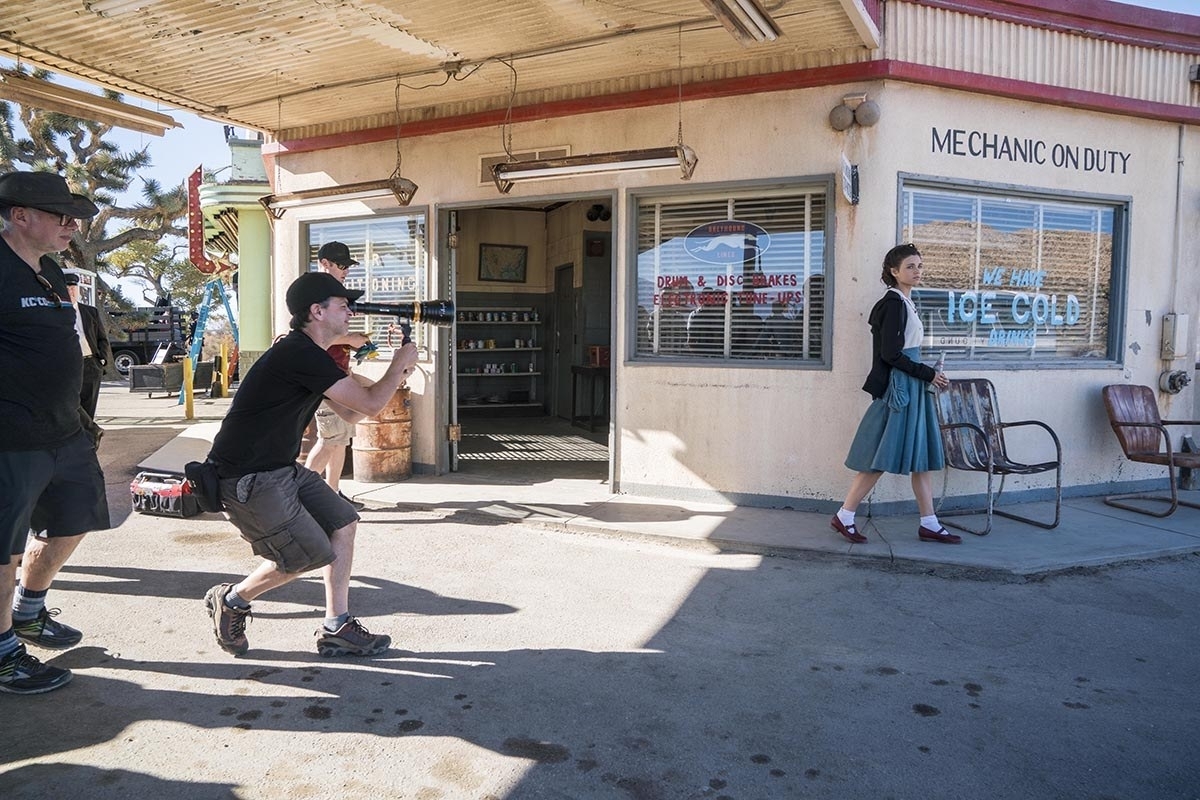
Cinematographer Matthew Jensen ASC at the viewfinder during production on I Am the Night. Image by Clay Enos. © Turner Entertainment Networks, Inc. A Time Warner Company. All rights reserved.
“I know the 500T 5219 very well, having used it for many years, and felt very comfortable deploying it for all the day/night interiors and night exterior scenes,” Jensen remarks. “It has a great color response on skin tones and was especially effective in capturing the blue/teal cast of the mercury vapor lighting of L.A. at dusk and nighttime. I also love its grain and the texture. I tend to rate the 500T at 400ASA to get some protection in terms of exposure and to encourage slightly richer blacks. I always have confidence that the 500T will retain details in both the highlights and at the low-end of the exposure range too, in the dark and shadow areas of the image.”
He continues: “I exposed the 5207 250D normally for most of the daylight work, except for the desert scenes set in Sparks, where we see Fauna in her red coat. Patty and I wanted to do something more radical for those sequences. So I over-exposed on set and then pull-processed the rushes at the lab. This had the effect of softening the contrast and reducing the grain for a silkier-looking image. It also helped the earthy brown and orange colors in our locations and particularly helped Fauna’s red coat to really pop out. That coat and the color red became potent visual hooks that extended throughout the series.”
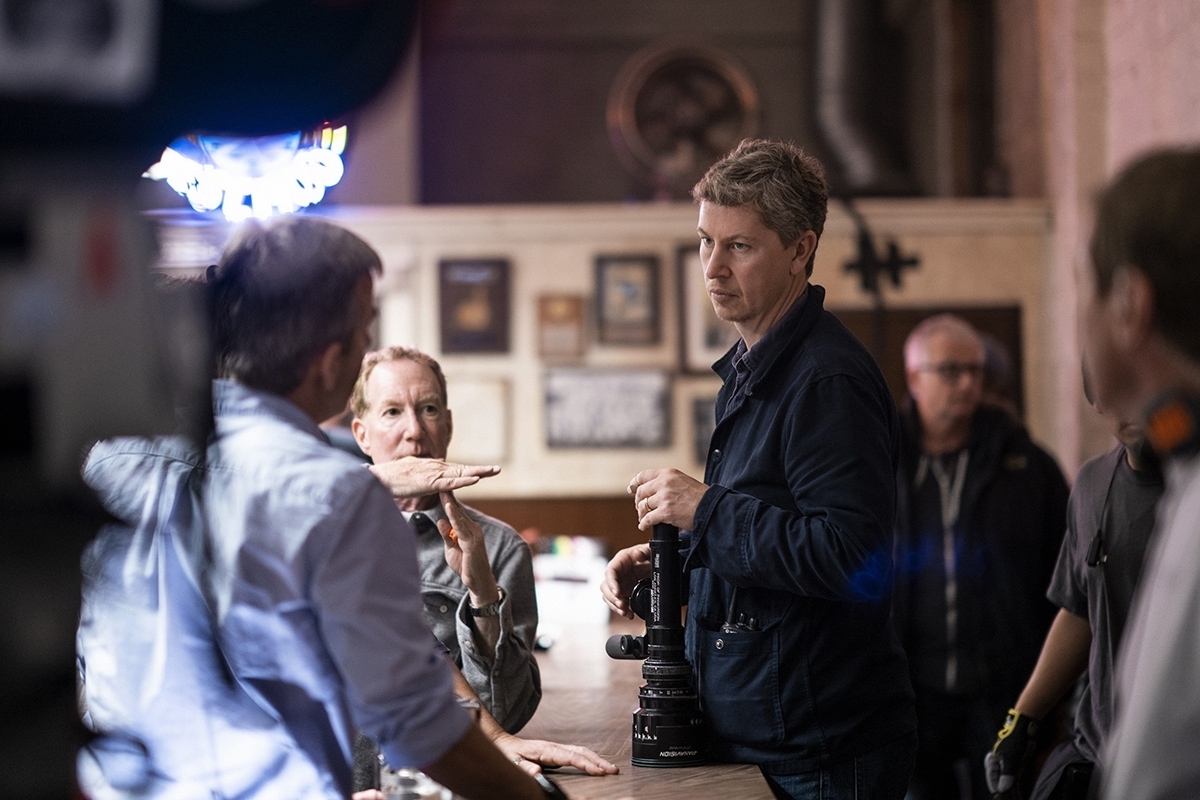
Cinematographer Trevor Forrest during production on I Am the Night. Image by Clay Enos. © Turner Entertainment Networks, Inc. A Time Warner Company. All rights reserved.
Forrest and McDonough both spent time on-set during Jensen’s stint on the production to acquaint themselves with the creative methodology, although both were given license to further develop the look-and-feel as they felt appropriate.
Forrest’s two episodes saw the action become more sinister, taking place increasingly in darkened day/night interiors and exteriors around Los Angeles.
“My work was particularly focused on depicting the underbelly of Los Angeles, the depraved burlesque parties at Hodel’s house, the psychodrama facing Jay Singeltary, and the police investigations – all of which I regarded as photographic gifts,” remarks Forrest.
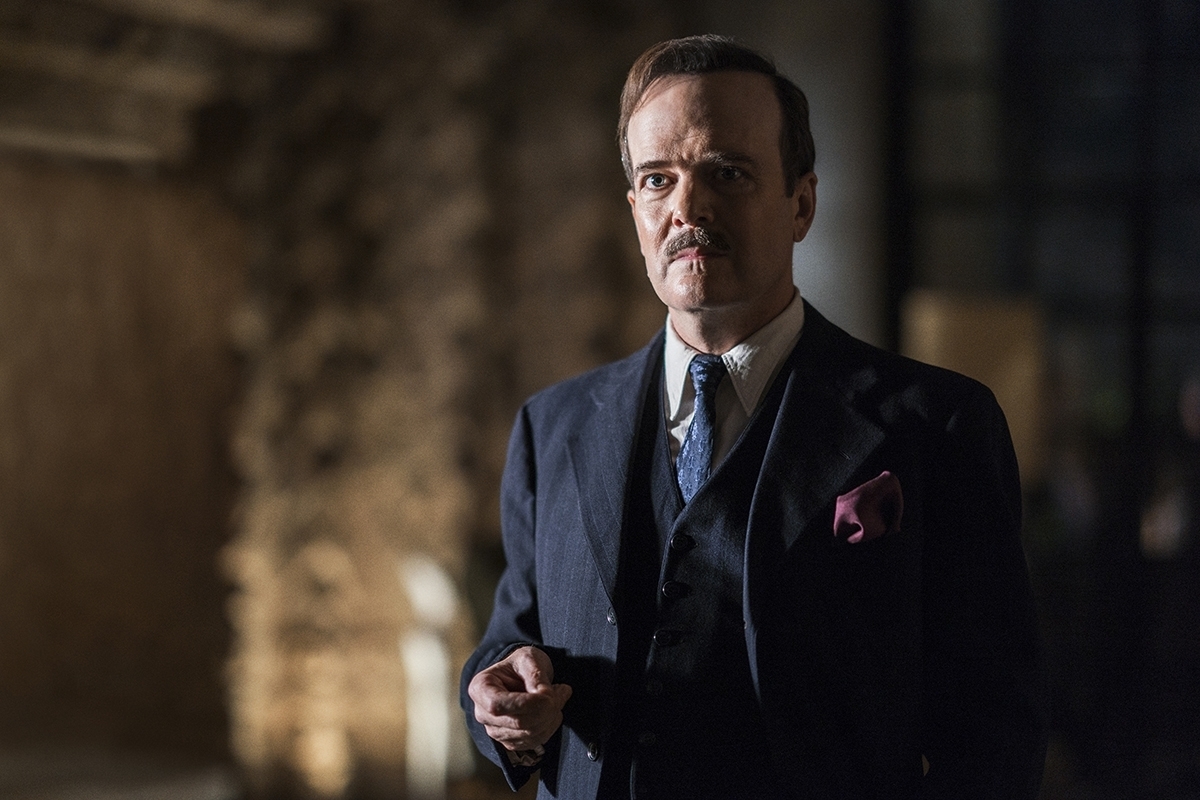
Jefferson Mays stars as Dr. George Hodel in I Am the Night. Image by Clay Enos. © Turner Entertainment Networks, Inc. A Time Warner Company. All rights reserved.
Running mainly with VISION3 500T 5219 Film, Forrest says he was particularly impressed with its ability to render “the beautiful, inky blueness of the LA night exteriors, as if you were swimming underwater, and the way the filmed image quickly fell off into blackness.
“During a party scene at Hodel’s house, the rendition of the red curtains as the camera tracks through them to reveal an unsettling visual match between the architecture and a hat with devilish horns that Hodel is wearing, proved a perfect, cinematic slam dunk.”
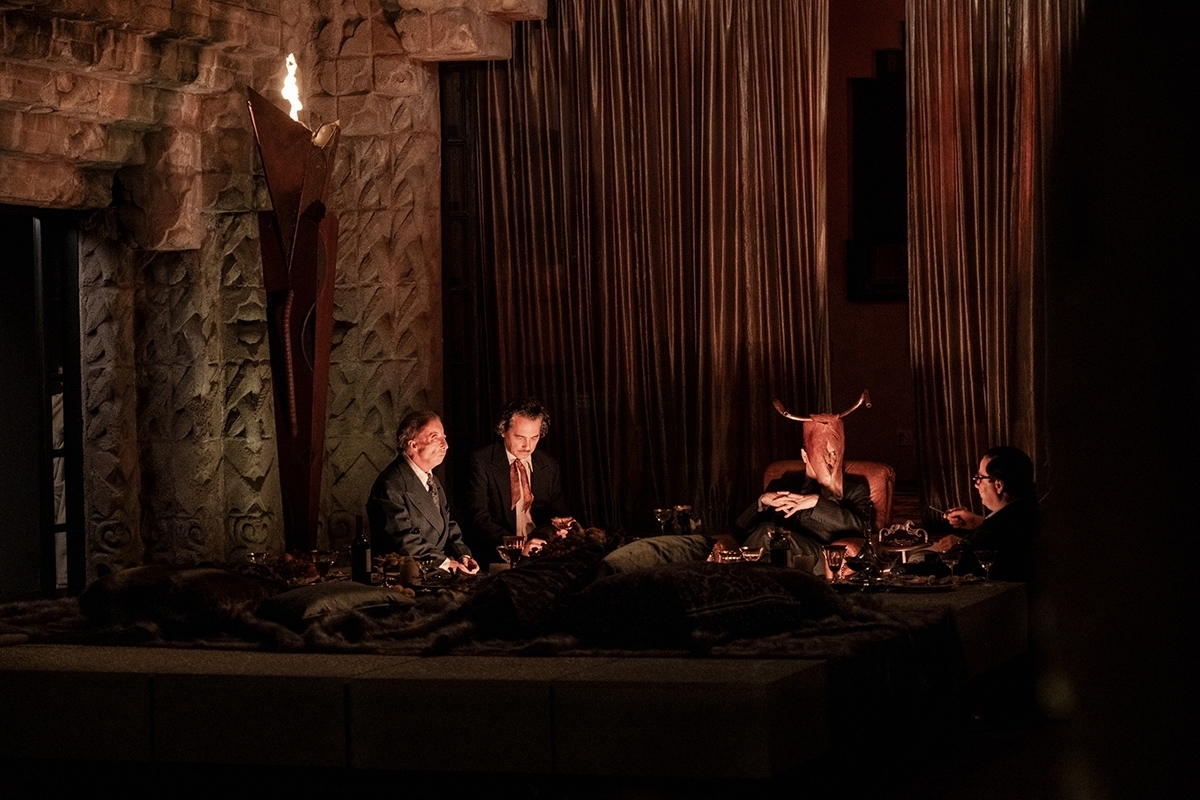
A sinister moment at The Sowden House from I Am the Night. Image by Eddie Chen. © Turner Entertainment Networks, Inc. A Time Warner Company. All rights reserved.
One of Forrest’s favorite scenes takes place in a long, gloomy corridor inside the LAPD office, where detectives are discussing the case. “I had three 6K pars beaming light through a window in the distance, which had the effect of a near-silhouette of the characters, plus some fill in the foreground. The 500T picked up every little sheen and texture of the polished concrete surfaces, as well as detail in the darkest areas of the profiled characters. So simple, but very noirish. It looked so gorgeous and engaging on film that I decided to hold with that frame for the majority of the scene and allow the audience to soak up the atmosphere.”
The final two episodes, shot by McDonough, transition from Los Angeles to Hawaii for the show’s dramatic denouement. Harnessing the dynamic range of the 500T, he shot further ominous scenes in Hodel’s house, using fire and torch light to create pockets of darkness and mystery. Additionally, over three consecutive nights, he cleverly lit-up several city blocks near the docks in San Pedro, enabling shooting from different directions for two different storylines. “You can really trust 500T film to record the highlights and, with a touch of fill light, the shadows essentially take care of themselves,” he says.
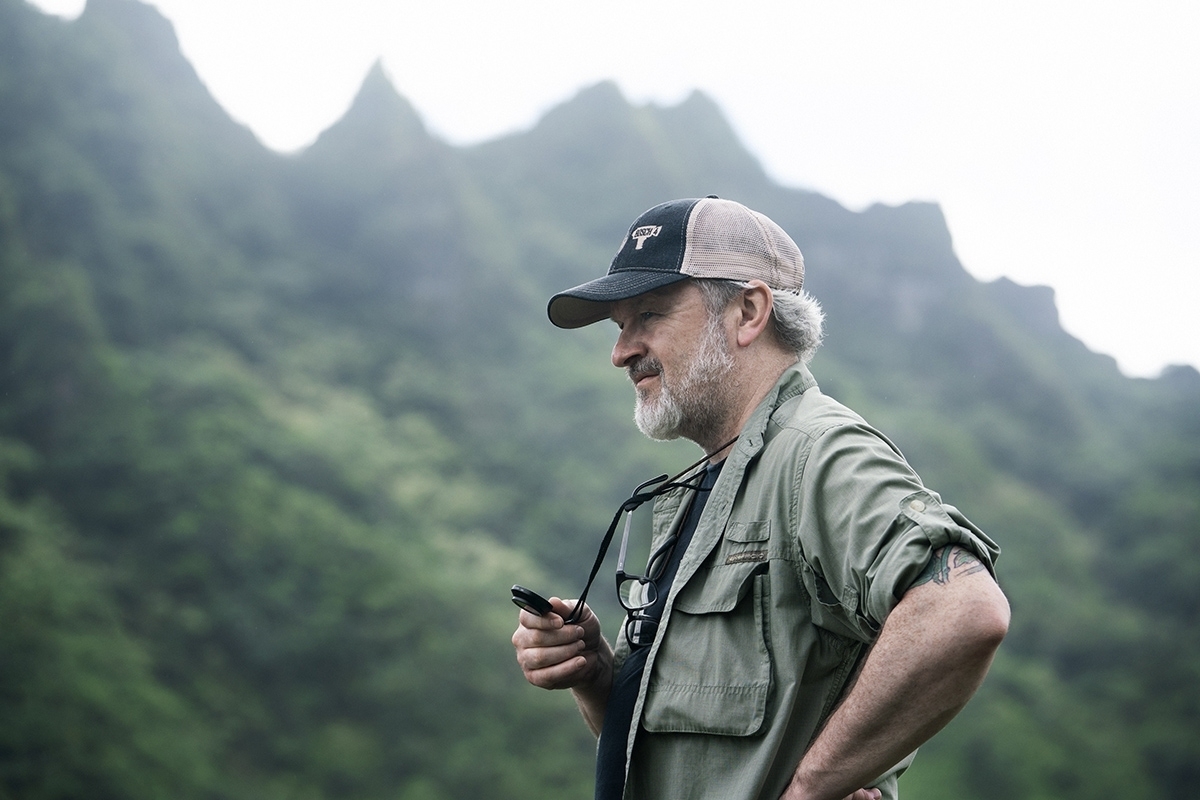
Cinematographer Michael McDonough BSC on location in Hawaii during production on I Am the Night. Image by Clay Enos. © Turner Entertainment Networks, Inc. A Time Warner Company. All rights reserved.
However, when the action moved to Hawaii, McDonough deployed VISION3 250D 5207 Film to create a marked sense of separation. “If L.A. was down and dirty, the Hawaiian scenes needed an injection of something exotic. The 250D is a lovely rich and vivid filmstock and proved especially good in capturing the natural verdant fauna and flora of our Oahu locations. It’s also fast enough to use in low-light situations, which is just as well, because more often than not the days we shot there were quite overcast, but the results look luscious.”
All three DPs attest to the value of celluloid in galvanizing the cast and crew. “I love the rhythm of shooting with film and how the reload of the magazines gives everyone a break to collect themselves, especially the actors, before they go again,” says Jensen.
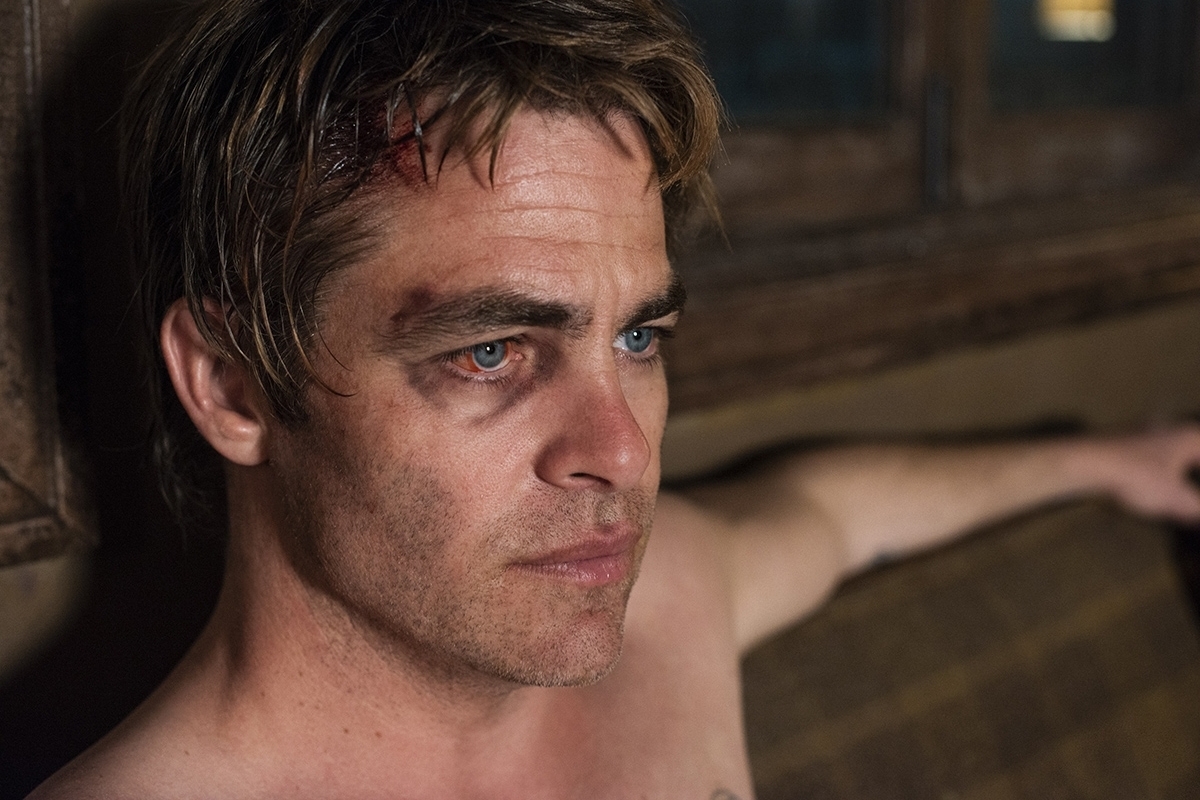
Actor Chris Pine stars as Jay Singletary in I Am the Night. Image by Clay Enos. © Turner Entertainment Networks, Inc. A Time Warner Company. All rights reserved.
For Forrest, it comes with the snap of the clapperboard. “Everyone clicks into their A-game on a film shoot, and it’s exciting to embrace its preciousness. The beauty in the way film catches the glint in an eye, the glow of skin lit only with a single bulb or the nuance of textures in the dark – they really pull the viewer in, and your storytelling as a filmmaker becomes all the more potent.”
For McDonough, nothing quite beats the relationship a film camera brings between the cinematographer and the actors. “I love that physical proximity and personal connection you have with the actors and their performances when you look through the viewfinder on a film camera. It’s so much better to be on set, in the thick of it, than running back and forth to monitor in a video village. I love the freedom of that.”